Review and test drive Chery Tiggo 5. Urban crossover
Material content
Exterior
When you look at the Chery Tiggo 5 for the first time, you understand that this car is modern and stylish, especially when compared with its older brother, which has a pronounced personality. The headlights are close to the shape of a rectangle, they look quite compact and have lensed optics for high and low lighting.
As for the daytime running lights, they have LED filling and have an original, angular design. The false radiator grille received a chrome frame and a company nameplate, which looks quite elegant. A strong bumper, below the edge of which there is protection made of unpainted plastic, eloquently testifies to the off-road properties of the Tiggo 5.
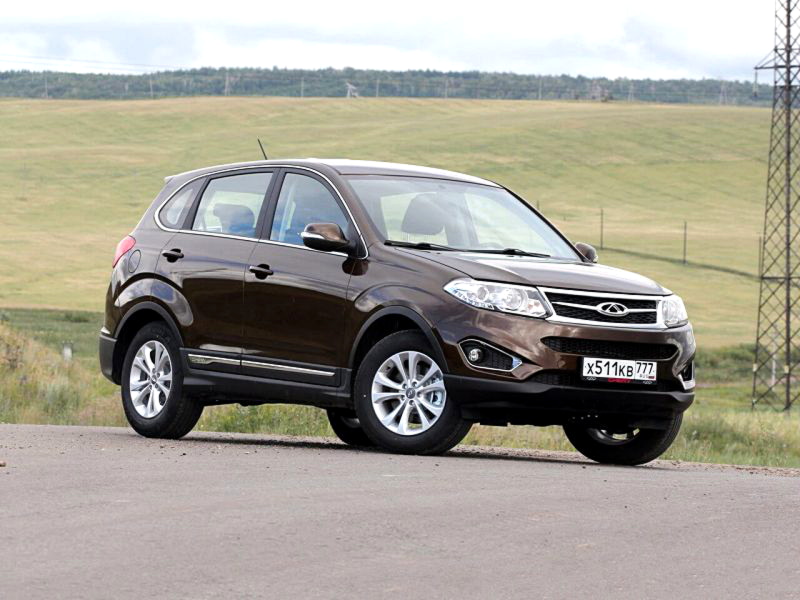
The “foglights”, which have found their place in the bumper on unique inserts, as well as air intake slots, have become useful. The side of the car from China looks like the side of a real crossover. The surface of the hood turned out to be even, in the middle it has two ribs that go from the headlights to the front roof pillars.
Turn signal repeaters appeared on the rear-view mirrors. The wings, together with the doors, have “inflated” surfaces with a window sill line rising to the rear. The wheel arches received the presence of original wave-like stampings. The roofline descends aft of the bodyline with minimal overhangs. Everything looks original and fresh. All the correct crossover proportions were observed.
With the vehicle loaded, the ride height is 163 millimeters, however, when the car is empty, this figure rises to 190 millimeters, which is quite good, especially considering the quality of our roads.
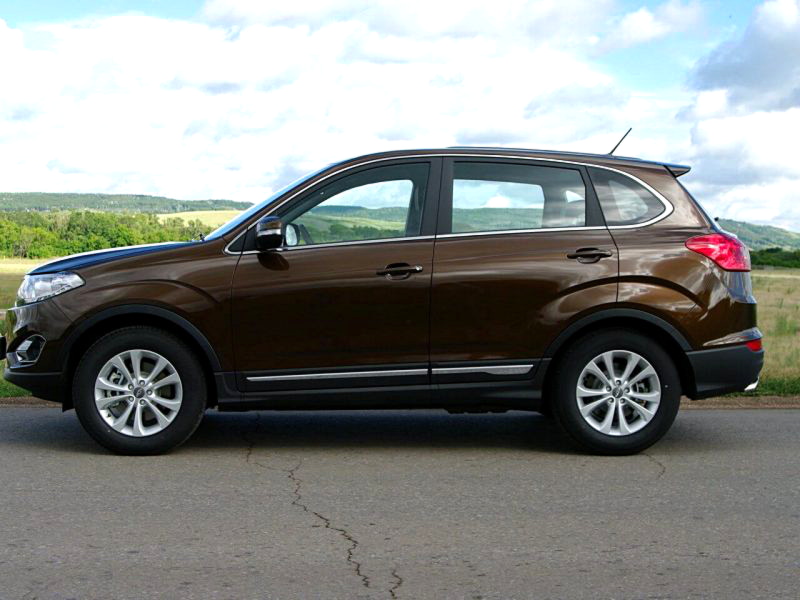
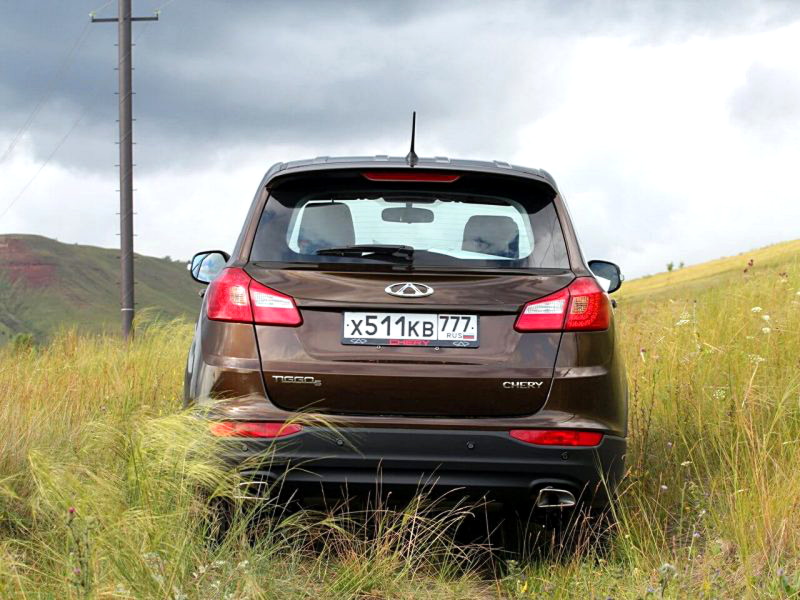
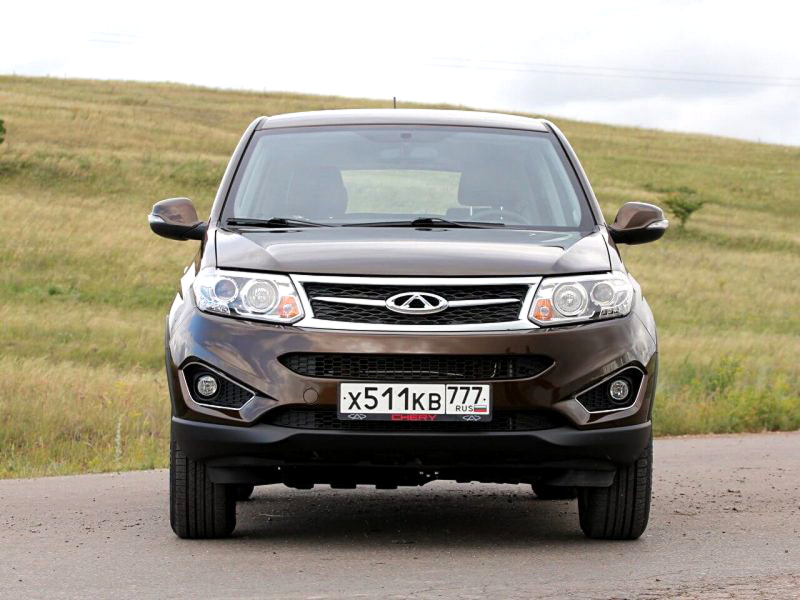
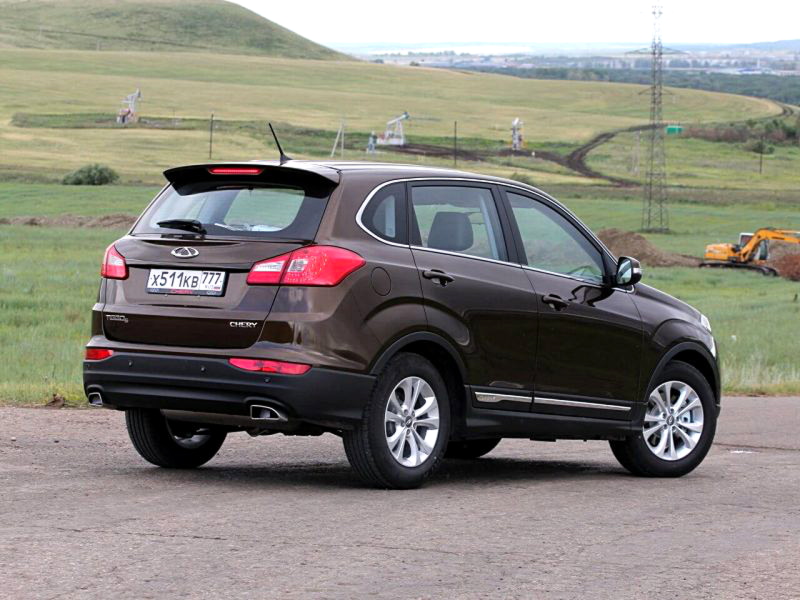
The aft part of Chery Tiggo 5 has an impressive bumper, which also has plastic protection. The exhaust pipes were spaced apart on different sides and have trapezoidal nozzles. Large overall lamps received LED equipment. A spoiler is installed at the top of the tailgate, which is also equipped with an auxiliary brake light.
Despite the fact that the luggage compartment is voluminous, the doorway at the bottom is slightly narrowed, which may create some difficulties when transporting oversized cargo. Generally speaking, the crossover has become more mature, has received seriousness and some solid heaviness.
He is able to overcome smooth asphalt and off-road without any special difficulties. The appearance of the car really turned out to be unique, so it’s quite difficult to find similar features in it with other crossovers.
Video
Advantages and disadvantages
Machine advantages
- Rich equipment in the basic configuration;
- Solid appearance;
- Modern and spacious salon;
- Adequate behavior on different types of roads;
- Energy-intensive suspension;
- Good build;
- The technical component is made at a decent level;
- Quite powerful and relatively economical, as well as simple and reliable power units;
- Acceptable ride height;
- Good level of security;
- LED lighting system;
- Touchscreen;
- Large luggage compartment;
- Acceptable pricing policy of the company;
- Good cross;
- Modern lighting (there is LED content);
- Spacious interior;
- Comfortable front seats;
- There is a lot of free space on the back sofa;
- Good transformation of the cabin for the transportation of bulky luggage;
- There are various electronic technologies to assist the driver in driving;
- The latest generation has become better in quality, not only outside, but also inside.
Cons of the car Empty steering wheel; The power unit does not always have enough power; Simple seats; Mediocre interior noise isolation; A small line of power units; There is no winter package; No mudguards; Imperfect interior ergonomics; Some option keys are not conveniently located; No ESP option; A small opening in the luggage compartment; There is no all-wheel drive (at least for now); Increasing the value of the car.
Trunk
The luggage compartment of the T21 crossover now looks a little different than that of the first-generation “Chinese”, in particular, the door does not open to the side, but from the bottom up, and is held in the upper position due to two telescopic shock absorbers.
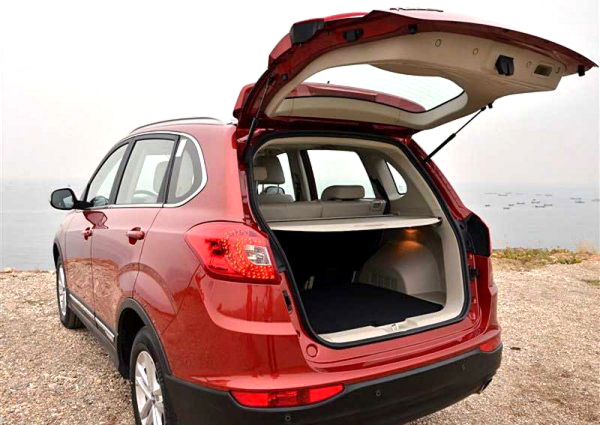
At the same time, the spare wheel “moved” from the outer part of the door to a niche under the floor, a button is provided to open the trunk above the rear license plate.
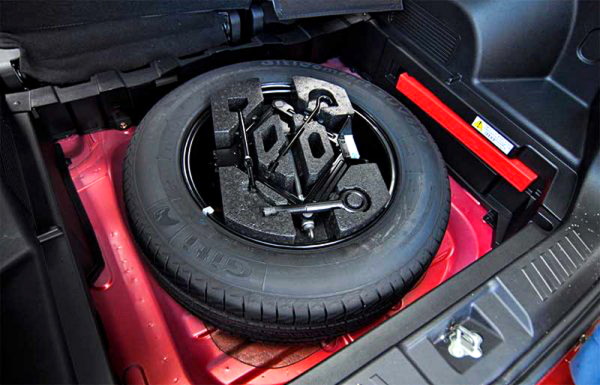
The volume of the cargo compartment is 370 liters, there is a curtain that is easy to install and remove.
You can fold the backs of the rear sofa by pressing the keys located at the top of the sofa, and then the trunk increases to 1000 liters.
At the same time, the floor turns out to be almost flat; there is a handle on the inner surface of the tailgate for closing.
There is a backlight on the right side of the luggage compartment, but there are no hooks for securing cargo, boxes and other additional elements here, everything is very simple, without frills.

Advantages of the model
As a representative of a new family of crossovers from a well-known manufacturer, Chery Tiggo 5 2015 has a lot of advantages that allow it to occupy a high place in the ranking of classmates presented in the modern secondary market. The main advantages of the model, according to car owners, are:
- Good equipment.
- Cheap service.
- Warm salon.
- Spacious salon.
- Little expense.
- Great ground clearance.
- Quick start of the engine in the cold season.
- Big trunk.

Effective ECO system
In China, the fifth Tiggo is offered with two engines: a 1.5-liter turbo engine with 152 hp. With. or a 2.0-liter naturally aspirated petrol unit producing 136 hp. With. The first one is not available for us, under the hood of the model we can only see the second one. Gearboxes – mechanical five-speed or CVT. He has an innovation. Now, next to its selector in the cabin is a button for turning on the ECO mode, and earlier this place was occupied by the S (Sport) button.
According to passport data, the ground clearance of the new Tiggo 5 has increased to 190 mm (previously it was 163 mm). Measurements showed that the distance from the ground to the front bumper is 280 mm, to the rear bumper 390 mm, to the muffler – 330 mm (previously it was at a height of 205 mm).
The new Tiggo 5 pleases with the dynamics in the city. With a two-liter engine with a capacity of 136 liters. With. and a CVT, it accelerates from 60 to 80 km / h in the “D” mode in about 3 seconds. He no longer has sport mode, and in ECO mode, acceleration slows down slightly, for about a second. Compared to the previous version of the car, the performance has improved, although the engine now complies with the Euro 5+ economy standards (that’s right!), And before there were Euro 4.
Can acceleration be improved using manual gear selection? In fact, no. I don’t try the seventh, sixth and even the fifth stage, I immediately go to the fourth. The result is a whole 6 seconds! On the third – five, on the second … it doesn’t work, the tachometer needle reaches the limiter, and third gear is engaged. From about 4000 rpm, the engine goes into a roar.
In the normal driving mode, virtual gear shifting occurs at 2000-2500 rpm, and during acceleration – at the level of 4000-5000 rpm, depending on its intensity. The maximum torque of the engine has remained practically the same (it has decreased from 182 to 180 Nm), but, as stated, it is now developing on the “shelf” of 4300-4500 rpm, and a noticeable pickup begins exactly “here”. The new Tiggo 5, like other Chery models, according to the passport data, must “eat” the 95th gasoline, but the use of the 92nd is allowed.
“Fifth” Tiggo don’t call me quiet. In addition to the noisy engine at high speeds, the “songs” of the variator are heard in the cabin (when reversing – on a special, high note). The large glass area contributes to the penetration of wind noise (starting from a speed of 100 km/h). On rough roads, the suspension “clatters”, this is how the “bones” (anti-roll bar struts) usually knock. Non-studded winter tires also sound unexpectedly loud.
For urban conditions, Tiggo 5 has excellent maneuverability. A 4.5 meter car has a minimum turning radius of about 5.5 m. Large windows “in a circle” offer excellent visibility. But the exterior mirrors (with electric drives and heating) are too small, they have to be “spread out” as much as possible when driving. In the maximum configuration there is a rear view camera. The picture from it is not very clear, and the guides that appear on the screen are very good. The music is turned off while reversing.
The steering wheel with power steering became, according to sensations, more “heavy”, but this did not add information to it. Its “length” remained the same: three turns from lock to lock. The steering wheel lies comfortably in the hands, the control buttons on it are ergonomically located.
The city fuel consumption of the updated Tiggo 5 has improved rather than vice versa. We didn’t get any big traffic jams during the test, and with average traffic, gasoline consumption was about 12 liters per hundred. Versions with “mechanics” have not yet been delivered to me, it would be interesting to compare their efficiency. On the track, things are much better. In this test on long country hauls, I used the “cruise” for a long time, and here are the results: when choosing the ECO mode and setting the speed value to 110 km / h – 7.8 liters per hundred, when choosing 120 km / h – 8.2 liters. Without the use of cruise control, the car consumed approximately 8.5 liters. The abolition of the ECO mode worsened the economy per liter, or even a little more.
The dynamics of the car on the track is very good. Using mode D, you can accelerate from 80 to 120 km / h in about 6 seconds (unexpectedly!), And when you turn on the ECO system, in 7 seconds. Let’s compare this with the indicators of the fuel flow meter and get a nice picture. Although the fuel tank here is small (only 55 liters), at a full gas station you can “unscrew” 700-800 km.
ABS, as in the previous test, worked flawlessly on the Tiggo 5. This time we came across mostly loose sandy areas with the crossover, moreover, the sand was somewhere wet, and somewhere dry. And everywhere the car, with heavy braking, slowed down strictly on a straight line, even in those places where the wheels of one side were in loose sand, and the wheels of the other on a dense, rolled surface.
Manual gear selection outside the city is practically not necessary. Unless you come across a winding stretch of highway in a hilly area. It will be nice to maintain 90-100 km / h on it, using the range from third to fifth gear.
On straight roads, the Chinese crossover’s directional stability is still low. The car is still looking for an opportunity to change lanes for any reason: either the asphalt ruts will fall, or, on the contrary, the surface is too smooth, or a strong side wind will blow. Although the suspension is relatively stiff (MacPherson strut front, multi-link rear), the Tiggo 5 is prone to roll during sharp maneuvers. Push the handlebars to the side and the A-pillars appear to be vertical, with no pitch or roll. In fact, this simply cannot be, but the feeling arises just like that.
Small and medium irregularities do not annoy the driver and passengers, but large ones are unnecessarily noticeable inside. They should be treated with reverence. Would not interfere with the car and additional vibration isolation.